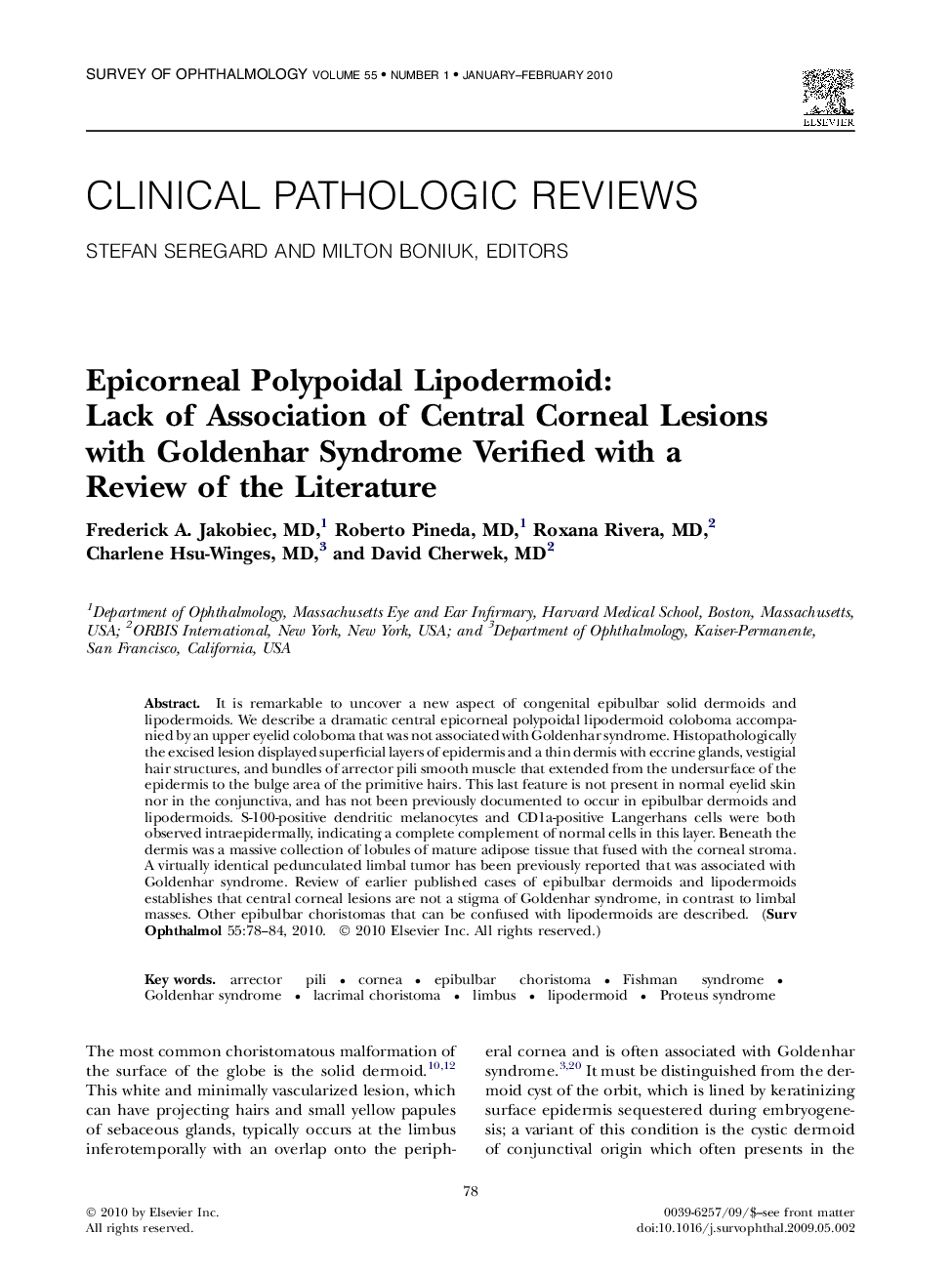| Article ID | Journal | Published Year | Pages | File Type |
|---|---|---|---|---|
| 4032866 | Survey of Ophthalmology | 2010 | 7 Pages |
It is remarkable to uncover a new aspect of congenital epibulbar solid dermoids and lipodermoids. We describe a dramatic central epicorneal polypoidal lipodermoid coloboma accompanied by an upper eyelid coloboma that was not associated with Goldenhar syndrome. Histopathologically the excised lesion displayed superficial layers of epidermis and a thin dermis with eccrine glands, vestigial hair structures, and bundles of arrector pili smooth muscle that extended from the undersurface of the epidermis to the bulge area of the primitive hairs. This last feature is not present in normal eyelid skin nor in the conjunctiva, and has not been previously documented to occur in epibulbar dermoids and lipodermoids. S-100-positive dendritic melanocytes and CD1a-positive Langerhans cells were both observed intraepidermally, indicating a complete complement of normal cells in this layer. Beneath the dermis was a massive collection of lobules of mature adipose tissue that fused with the corneal stroma. A virtually identical pedunculated limbal tumor has been previously reported that was associated with Goldenhar syndrome. Review of earlier published cases of epibulbar dermoids and lipodermoids establishes that central corneal lesions are not a stigma of Goldenhar syndrome, in contrast to limbal masses. Other epibulbar choristomas that can be confused with lipodermoids are described.
